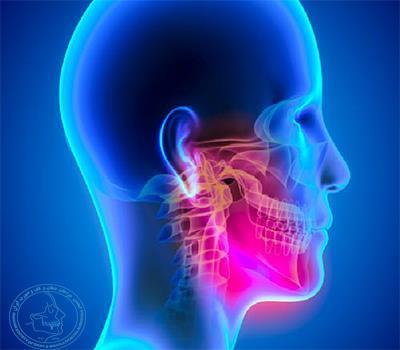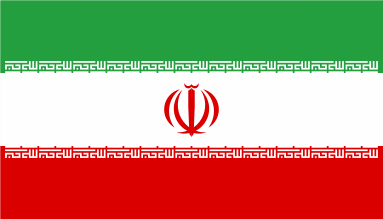Headache pains that cause orofacial pain
1397/06/11 14:00:00The fourth subgroup of 30 orofacial pain conditions is facial pain due to headaches. Approximately 90% of headache pain in the adult population is caused by migraines or tension-type headaches.72 However, of the new headaches that develop in people over 50 years old, approximately one-third are due

1.5 Headache pains that cause orofacial pain
The fourth subgroup of 30 orofacial pain conditions is facial pain due to headaches. Approximately 90% of headache pain in the adult population is caused by migraines or tension-type headaches.72 However, of the new headaches that develop in people over 50 years old, approximately one-third are due to intracranial lesions or some other systemic disease. The overall prevalence of headaches declines with age and it has been reported that the prevalence of headaches declines from 83% of individuals between ages 21 and 34 to 59% between ages 55 and 74.73 One exception to this generalization is migraines, which sometimes occur for the first time after age 50; in fact, about 2% of all migraines start at this late age.74 The following subsections discuss episodic headaches as well as those that have converted to the chronic form.
1.5.A Disease 11: migraine
This common disorder is considered to be a neurovascular dysfunction of the trigeminal nerve. Clinical criteria The main criteria for migraine with or without aura are (1) unilateral headache location, (2) a pulsetile headache, (3) nausea associated with the pain, and (4) photophobia and phonophobia. If an aura is present, it occurs before the headache pain develops and is described as a “flashing light or dizziness.” Migraines occur slightly more often in women than men, and mostly in people under 40 years old. When the headache develops, it usually lasts 2–6 hours, but never more than several days. There are several migraine variants, such as: (a) hemiplegic migraine (head pain, transient motor–sensory changes); (b) ophthalmoplegic migraine (eye pain, transient optic nerve palsy with diplopia–ptosis); (c) complicated migraine (cerebral vascular ischemia with resulting infarction and cerebral tissue damage); (d) midface migraine (orodental pain, duration 4–72 hours, with nausea, vomiting, phonophobia, photophobia). When diagnosing systemic and intracranial diseases and other disorders that are often a cause of headaches in old age, it is prudent to obtain a CT scan or MRI of the head. A good general rule is that an unusual initial presentation or a change in symptomatology (other than frequency or intensity) of migraine is a “red flag” that calls for consideration of imaging studies. Etiology The fact that most migraine patients have a strong familial history of migraine indicates it has a genetic basis. A detailed discussion of migraine is provided in Chapter 15.
1.5.B Disease 12: cluster headaches and autonomic cephalalgias
Cluster headache (CH) is the most common of the trigeminal autonomic cephalalgias, but this headache group also includes paroxysmal hemicrania as well as short-lasting unilateral neuralgiform headache with conjunctival injection and tearing (SUNCT). Clinical criteria Cluster headaches are one-sided retro-orbital, supraorbital, and temporal pain lasting from 15 minutes up to 3 hours when untreated. The headaches often occur at night, waking the patient from a sound sleep with severe pain. With CH, the patients are very agitated during the attack (pacing and head pounding), have no preheadache aura, and, usually, have no associated nausea or vomiting. Among CH patients, the afflicted are mostly men (5–6 times greater prevalence than women), are mostly smokers, and have an age of onset between 20 and 40 years. Cluster headache patients must exhibit, on the affected side, one of the following autonomic signs: conjunctival injection; ptosis; miosis; eyelid edema; flushing or blanching of the face; forehead or nasal sweating; lacrimation; nasal congestion and rhinorrhea. The headaches occur in clusters and will often repeat several times in a 24-hour period (one attack every other day to as many
as eight per day). The cluster period frequently lasts for weeks to months and is usually present in specific seasons of the year (greater in winter and spring) and can go into remission for months.75,76 Etiology The etiology is unknown but a genetic defect is suspected as the basis of this disorder. A detailed discussion of CH and autonomic cephalalgia is provided in Chapter 15
. 1.5.C Disease 13: tension-type headaches
Tension-type headaches (TTHAs) are the most common headache in society, with a lifetime prevalence in the general population of 30–78%. Even though this is the most frequent type of headache, the symptoms are somewhat nonspecific.
Clinical criteria A TTHA is generally a dull aching bilateral pain that is long lasting and increases slowly during the day to reach peak intensity near late afternoon. It may last for 1–2 days, but it must not occur more often than three times per week or it is not considered episodic. In most cases it is episodic and the pain is located in the suboccipital, temporal, and frontal regions. It is described as a “tight head band” and may be associated with pericranial tenderness. The headache may vary from a short duration to lasting hours, and it may increase slowly during the day to reach peak intensity near late afternoon.77 Episodic tension-type headache (ETTH) does not present with migraine signs (e.g., throbbing, photophobia, nausea). Etiology Many theories have been put forth to explain the causation and pathogenesis of ETTH. An important and moderately controversial one is the role that pericranial muscle and fascial tenderness plays in the causation or triggering of ETTHs. The questions that need addressing are (1) “Does jaw or facial muscle tension cause an ETTH?” and (2) “If muscle tension is not causative, does muscle nociception from the jaw, face, and neck potentially assist in the triggering process for ETTHs and migraines?” These issues are important to the role that myofascial pain and local myalgia play in the overall headache management program.
1.5.D Disease 14: chronic daily headaches
The group of conditions called chronic daily headache (CDH) includes chronic migraine, chronic cluster headache, hemicrania continua, chronic tension-type headache (CTTH), and new daily persistent headache (NDPH). Migraine, cluster, and tension-type headaches initially present as episodic headaches but they all have the potential to convert or transform into a continuous headache. Clinical criteria The criteria for each chronic form are the same as for the episodic form, but to be considered a “transformed acute-tochronic” headache requires that these disorders exist first in the episodic form and then over time transform to a more frequent or continuous headache. Once they convert, they are called CDH if present 4 or more days per week. Most of the time in CDH, the pain symptoms are present all of the time with only fluctuations up and down in intensity. One as eight per day). The cluster period frequently lasts for weeks to months and is usually present in specific seasons of the year (greater in winter and spring) and can go into remission for months.75,76 Etiology The etiology is unknown but a genetic defect is suspected as the basis of this disorder. A detailed discussion of CH and autonomic cephalalgia is provided in Chapter 15. 1.5.C Disease 13: tension-type headaches Tension-type headaches (TTHAs) are the most common headache in society, with a lifetime prevalence in the general population of 30–78%. Even though this is the most







